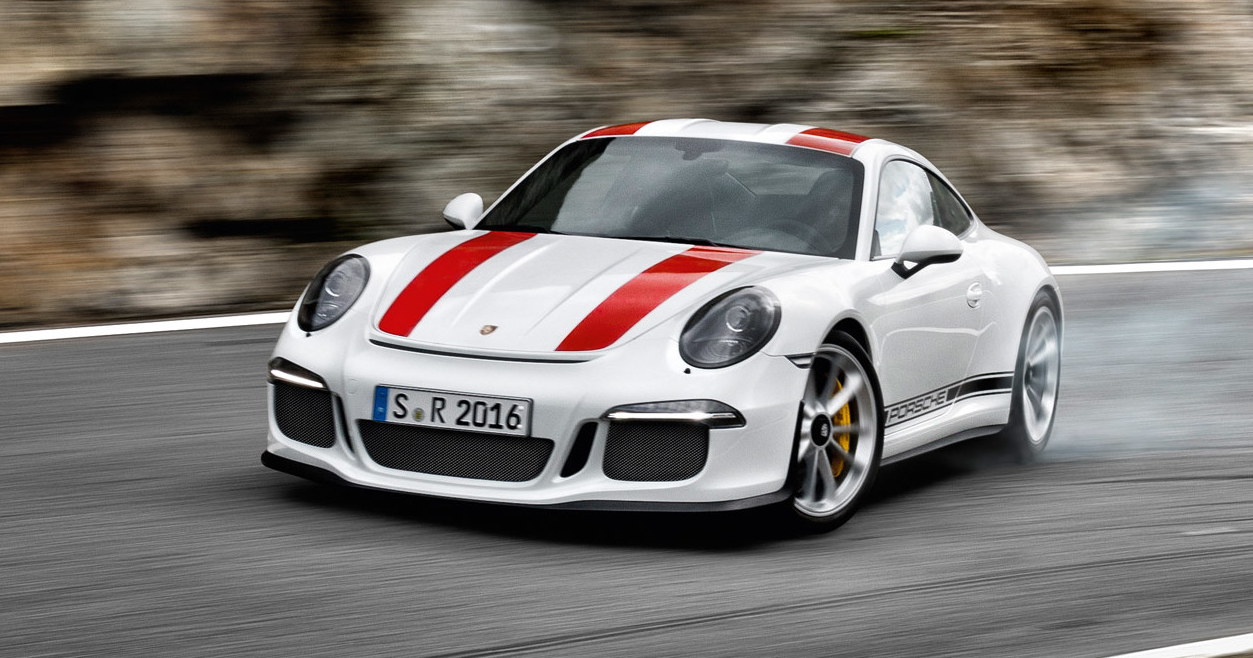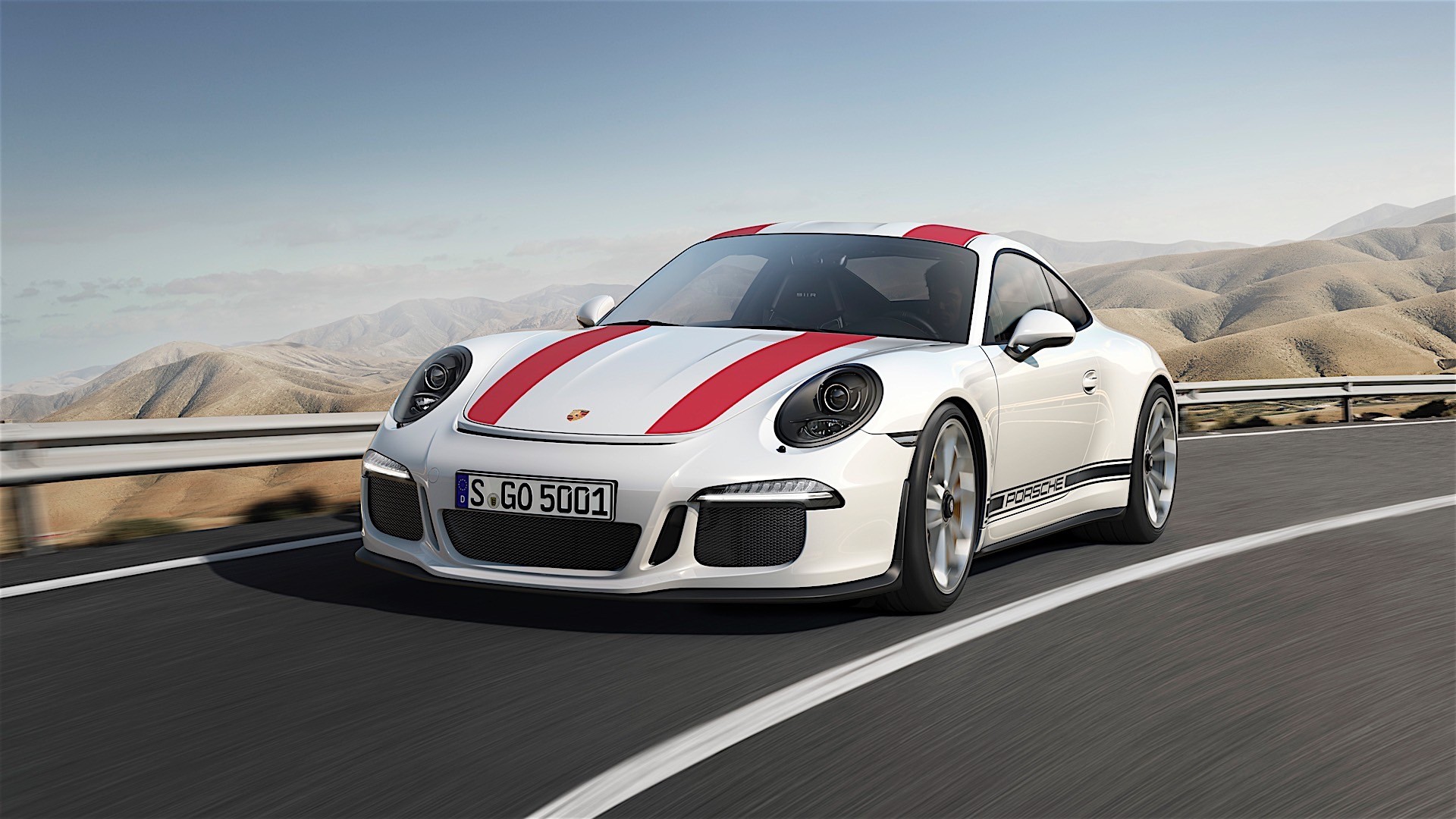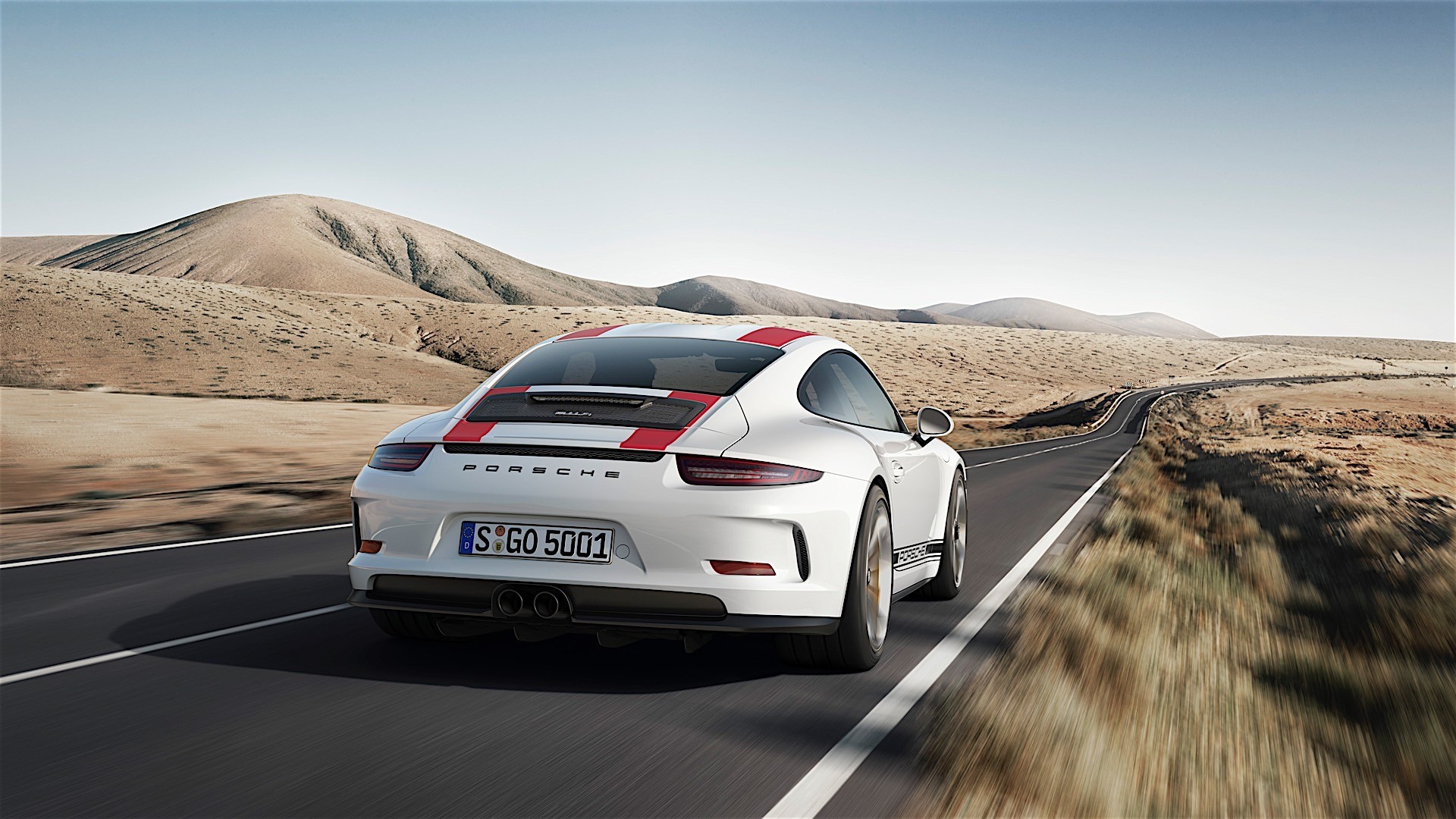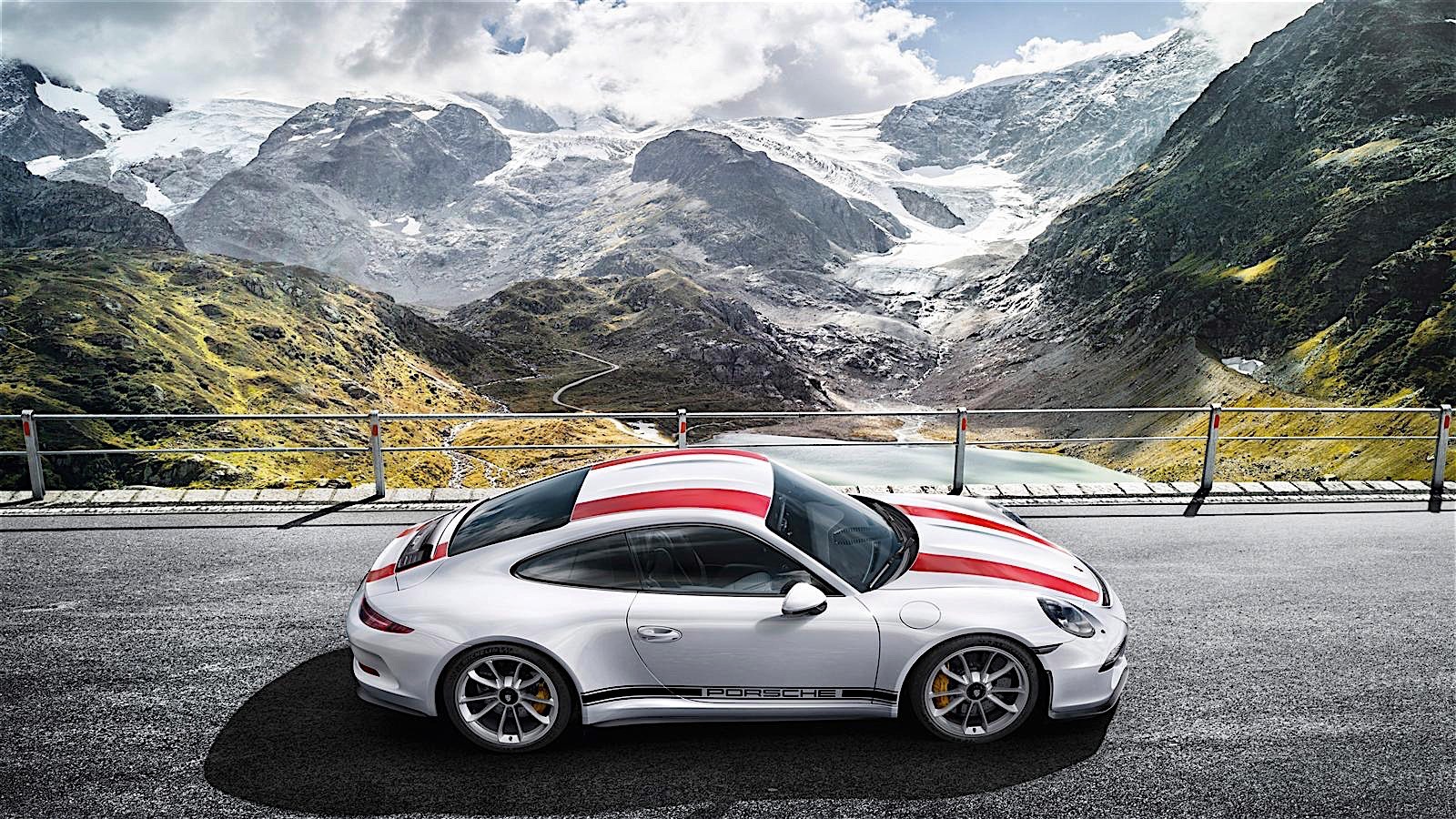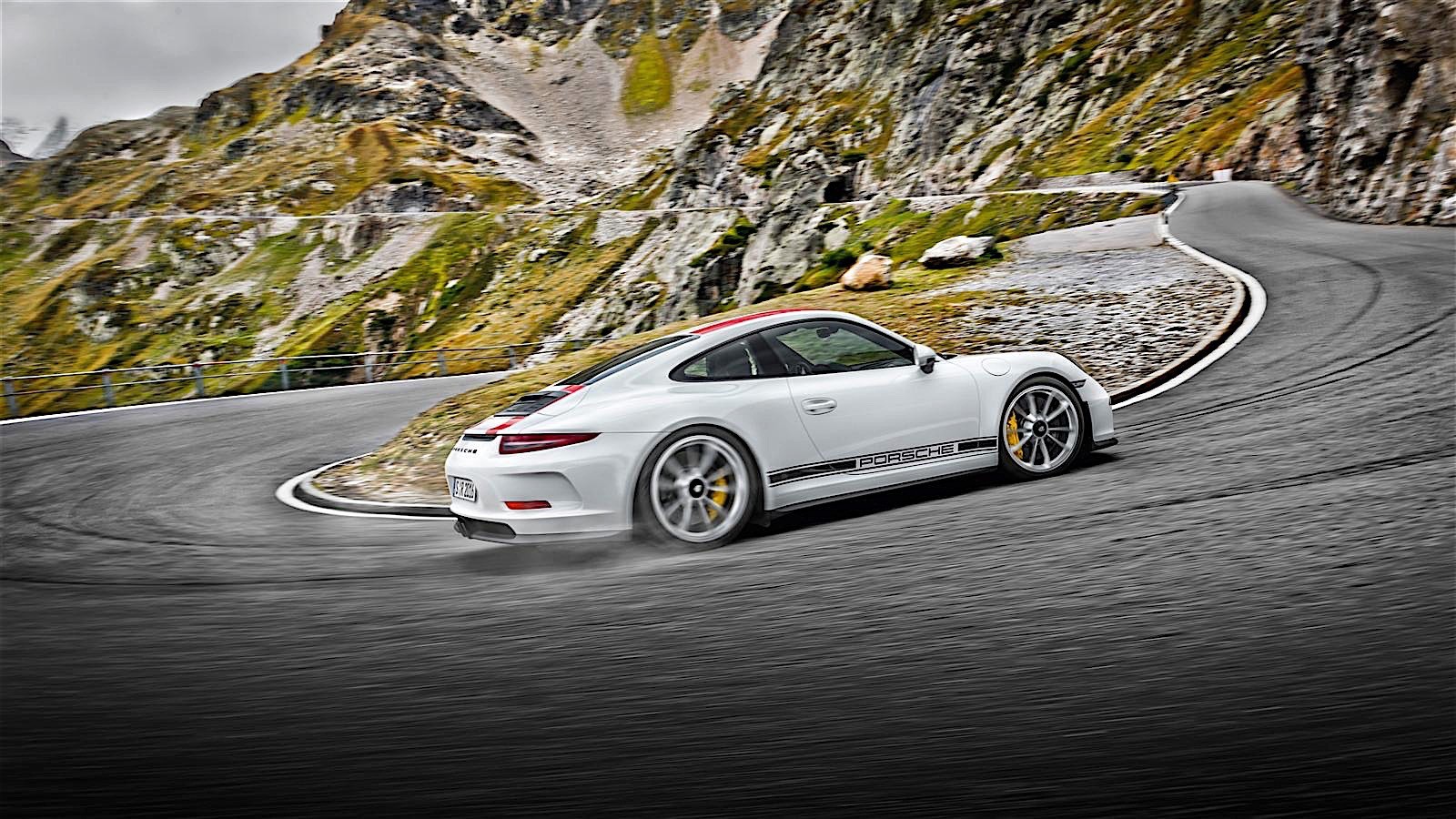2016 Porsche 911 R (991) – Ultimate Guide
Official photos: 2016 March 1 / Premiere: 2016 March 1, Geneva Motor Show (Salon International de l’Auto et accessoires) press day / Market launch: 2016 May
Sticking to their strengths, Porsche has created the most sought after car in its line-up, the 2017 Porsche 911 R. We have seen numerous rumors about this car for a couple of months now and this time we finally get to see it. The new Porsche 911 R with 4-litre naturally aspirated flat-six engine with a six-speed manual gearbox is coming to us for sure. It’s lighter and faster with its engines pumping out 493 bhp at 8,250 rpm and 333 lb-ft at 6,250 rpm. The result is probably the best 911 of the modern era. Porsche at its finest.
Porsche designed this car for just the thrill of driving. It’s completely different from the GT3 RS with its big spoiler, an overly stiffened suspension and an estranged paddled gearbox that made that car a peculiar choice to many Porsche fans. The new 911 R is just a plain car that will absolutely give you a very good time driving. Its body is reminiscent of the Carrera and the engine is pretty much the same from the one found inside the GT3 RS.
The 991.2 generation 911 had been on the market for half a year already, when suddenly one more version of the 991.1 was launched – the 911 R. The 2016 911 R is a 991 GT3 minus the rear wing plus engine from the 991 GT3 R (an engine developed from the GT3 RS 4.0 – with internal modifications) plus 997 GT manual gearbox. It is a car for the people who started to love Porsches during the Ferry Porsche era (he passed away in 1998). The car is for people who have above average driving skills. The car is for people who set more value to the inner beauty than to the outer beauty. Thanks to the aerodynamic body, the 991 R is 8 mph/13 km/h faster in top speed than the not so aerodynamic 991 GT3 RS.
Car and Driver Review: It is as close to a purist’s 911 as is possible this deep into the regulated 21st century, and it is closer to Preuninger’s heart than anything else he has worked on in his 15 years on the job.
There was a model with the same name in 1967. In 1967 the 911 R scored its first victory at the 84-hour endurance event and was at that event equipped with the Sportomatic gearbox – a gearbox without clutch pedal. So, you would expect the 2016 911 R come with the PDK gearbox, but luckily it was made with the manual gearbox. And interestingly so, the 991 R got the 6-speed manual gearbox from the 997 and not the 7-speed manual from the 991 (the 7th speed is an overdrive gear anyway for lowering the fuel consumption, top speed is achieved in 6th gear). In order to get the weight down, the 991 R was equipped with manual gearbox, ceramic brakes, CFRP (carbon fibre reinforced plastic) front wings and front lid, magnesium roof panel, plastic rear windows and rear side windows, deleted were the rear seats, the automatic air conditioning system and the stereo. The chassis came from the 991 GT3, so along came the rear wheel steering, which might not go with the philosophy of a lightweight car for skilled driver (the GT3 Cup does not have rear wheel steering).
Car Magazine: The R pulls with an industrial grumble from low revs before the trademark bassy howl starts to rise from around 3200rpm. Then there’s a step at around 4200rpm when things start to get really serious, and the needle spins round the central rev counter in a feral, ferocious lunge. If you hit 7000rpm you’ll think it all incredibly intense, and when you concentrate and hit 8250rpm, it’s like you’re strapped into Apollo 13 on re-entry.
The 991 R was offered in white and silver, but PTS (paint to sample) was possible. The dashboard was black and the seats either in black or brown. Although Porsche press release from March 1, 2016, stated that the cars could now be ordered, in reality the cars were all sold out months before.
Technical specification and comparison
| Modification | 2016 911 991 R | 2015 911 991 GT3 RS |
2013 911 991 GT3
|
| Engine | 4.0B6 | 4.0B6 | 3.8B6 |
| kW | 368 | 368 | 350 |
| lb-ft | 338 | 338 | 324 |
| Nm | 460 | 460 | 440 |
| Gearbox | manual 6-speed | PDK 7-speed | PDK 7-speed |
| 60 mph | 3.7 sec. | 3.2 sec. | 3.3 sec. |
| 100 km/h | 3.8 sec. | 3.3 sec. | 3.5 sec. |
| 160 km/h | 7.1 sec. | 7.5 sec. | |
| 200 km/h | 10.9 sec. | 11.4 sec. | |
| mph | 201 | 193 | 196 |
| km/h | 323 | 310 | 315 |
| kg | 1370 | 1420 | 1430 |
| lb | 3020 | 3130 | 3153 |
| W/lb | 122 | 118 | 111 |
| W/kg | 269 | 259 | 245 |
| Nordschleife | 7:20 | 7:30 |
Here year is the year of introduction year, not model year.
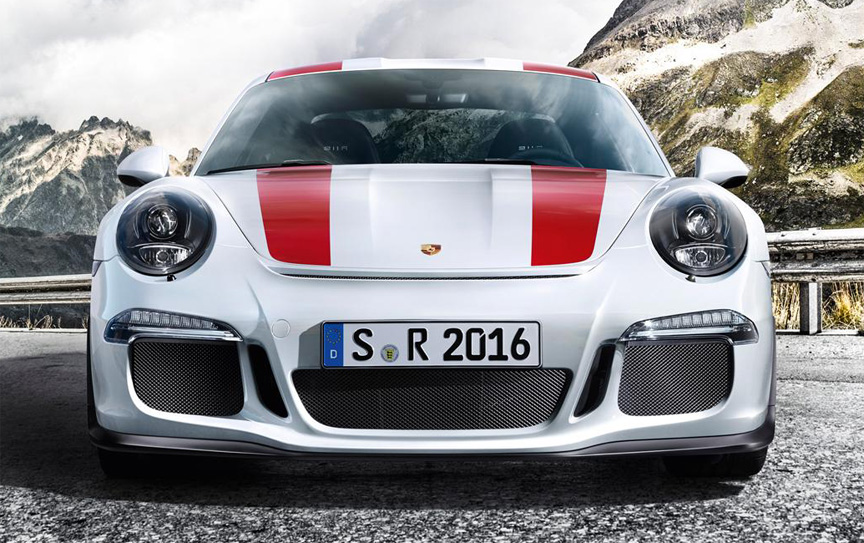

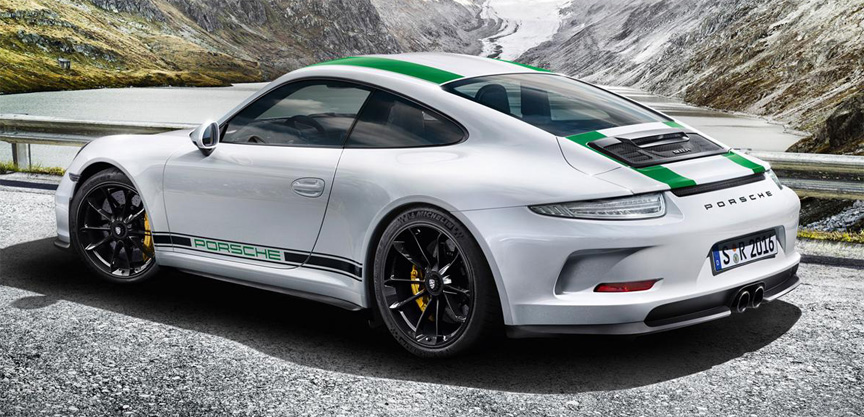
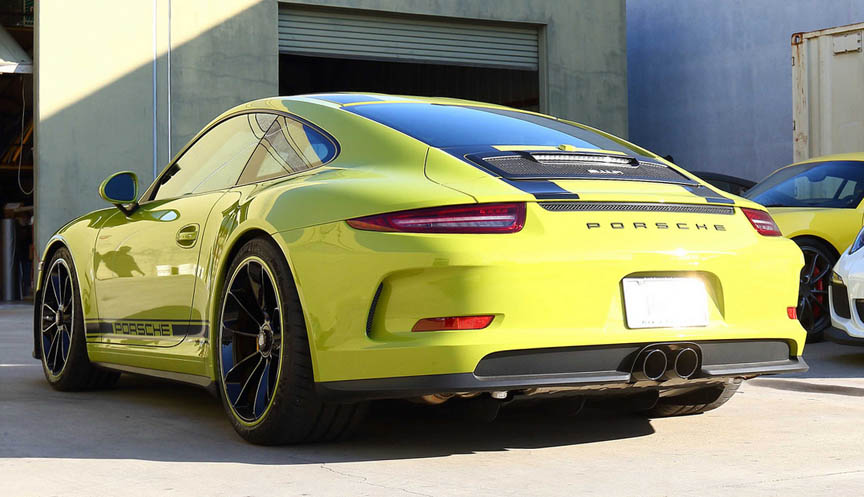
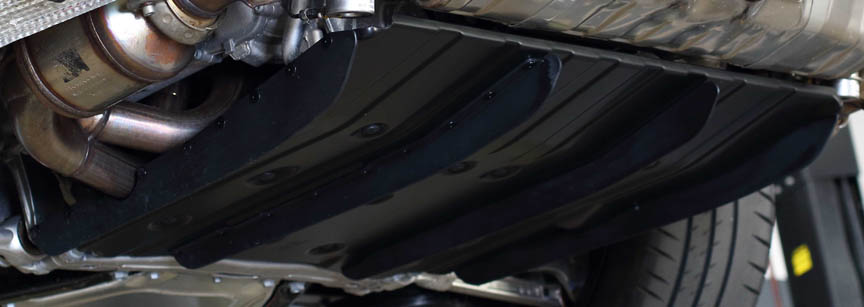
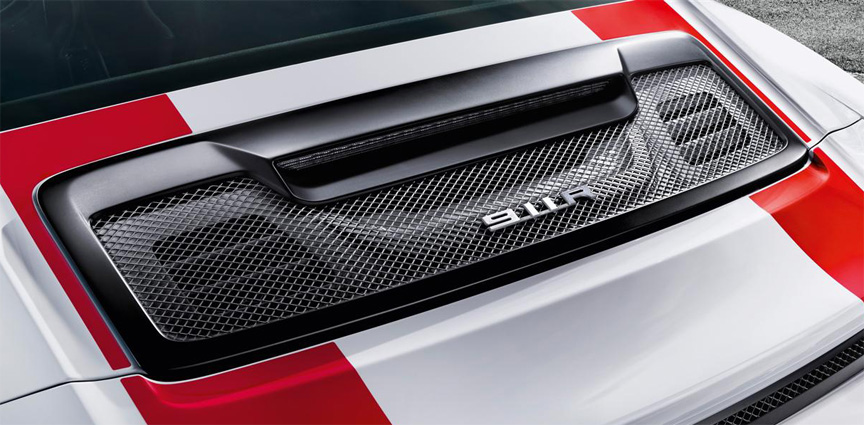

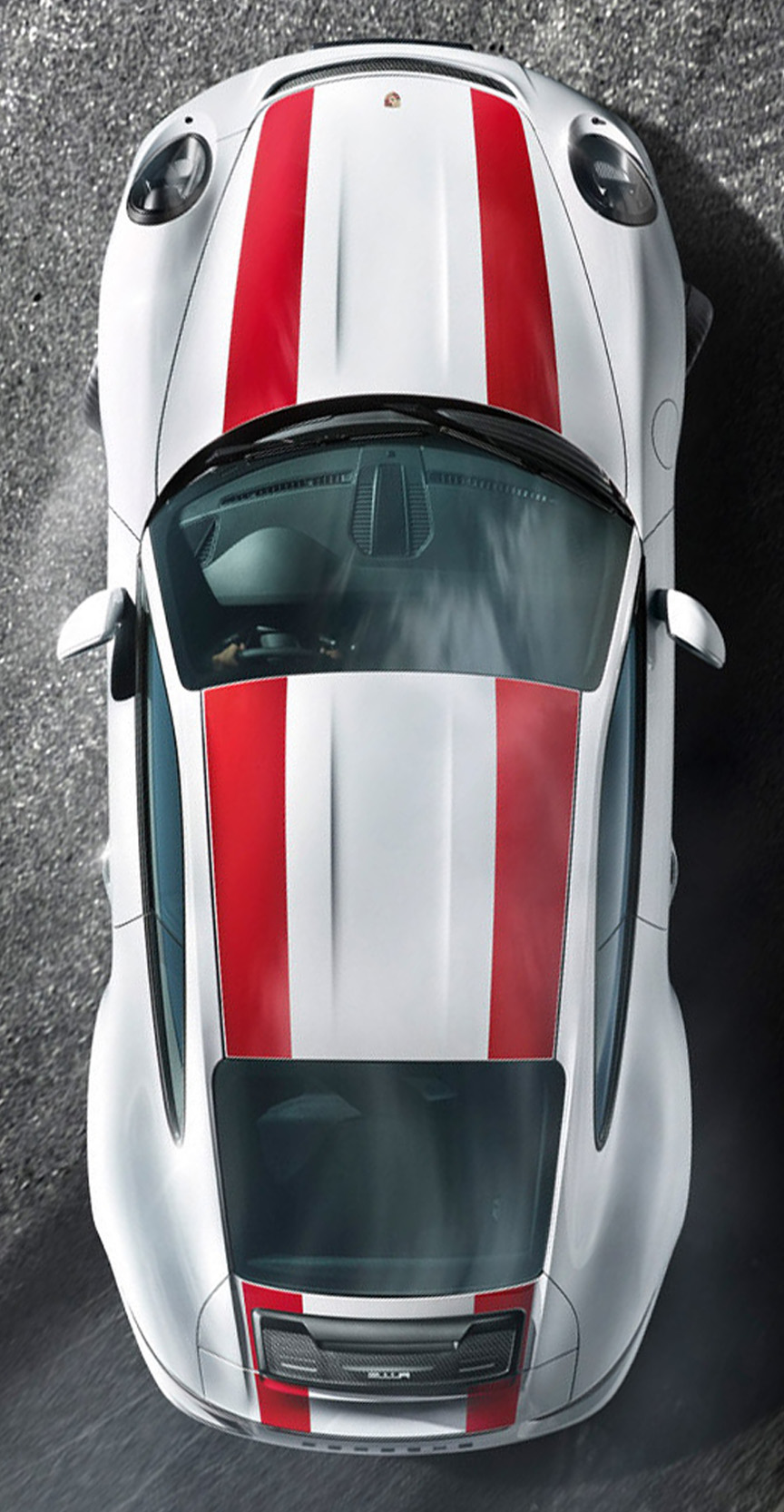
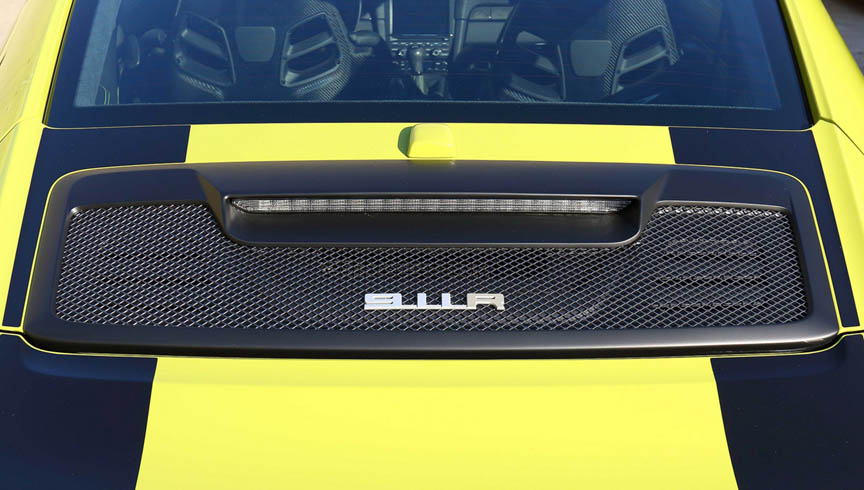
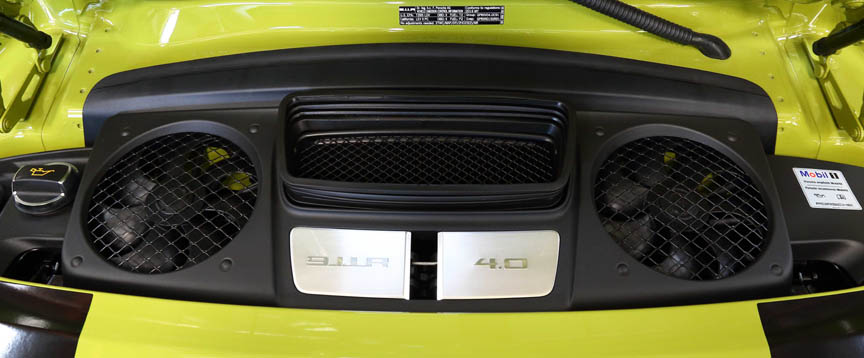
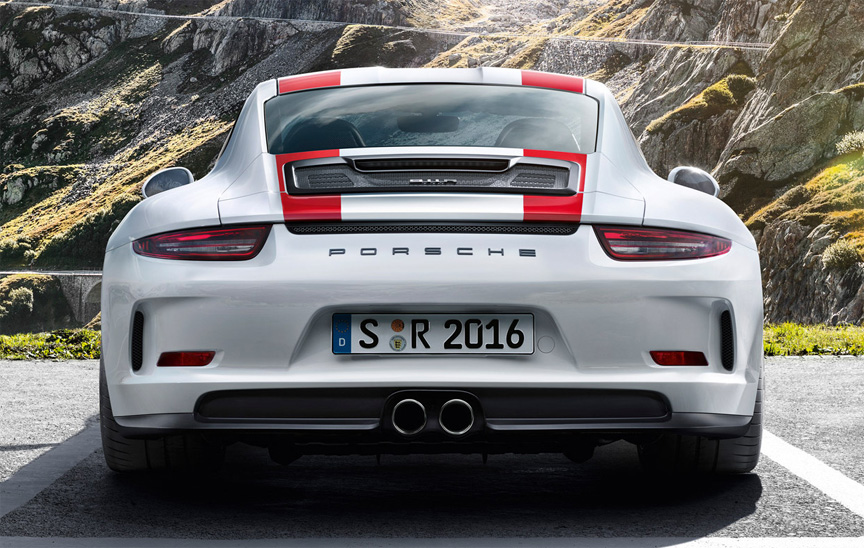
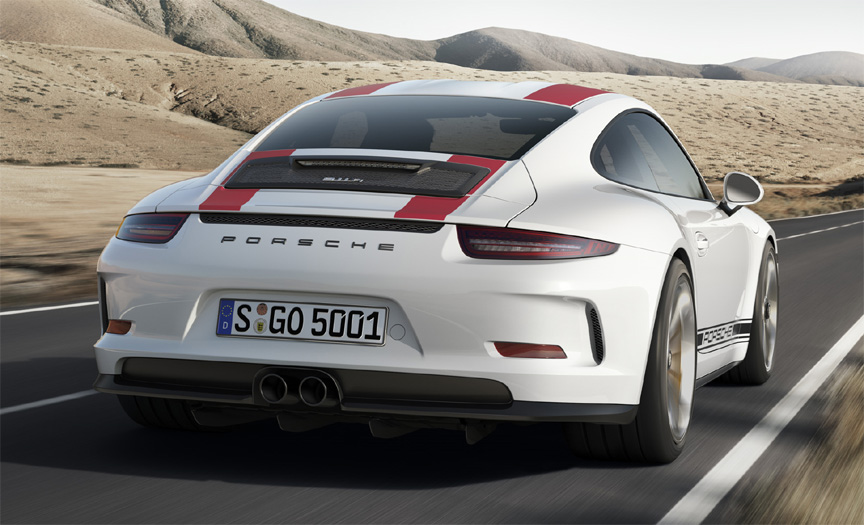
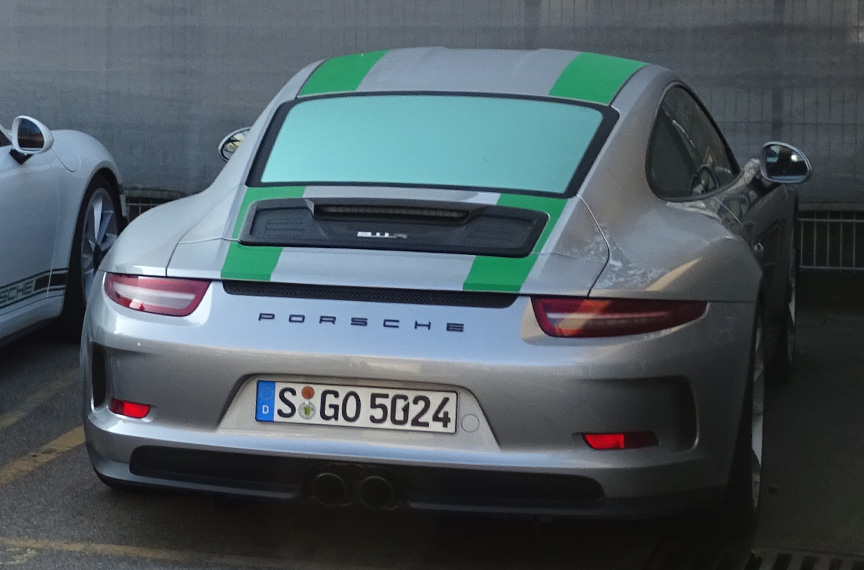
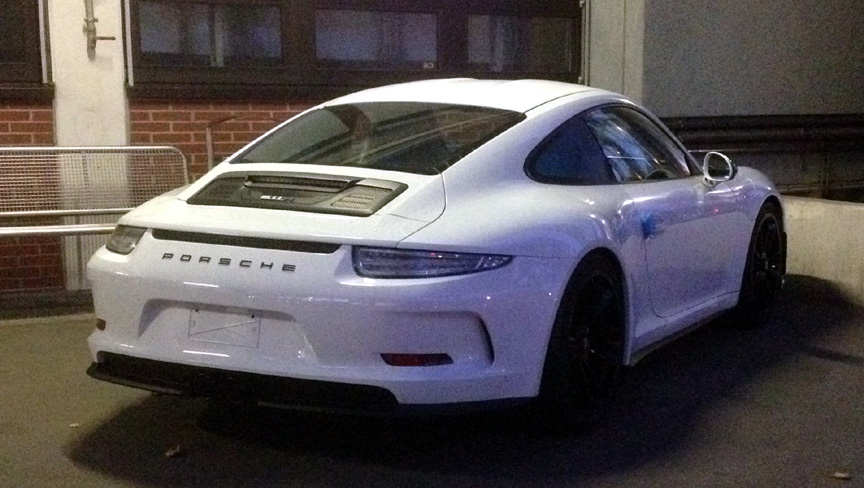
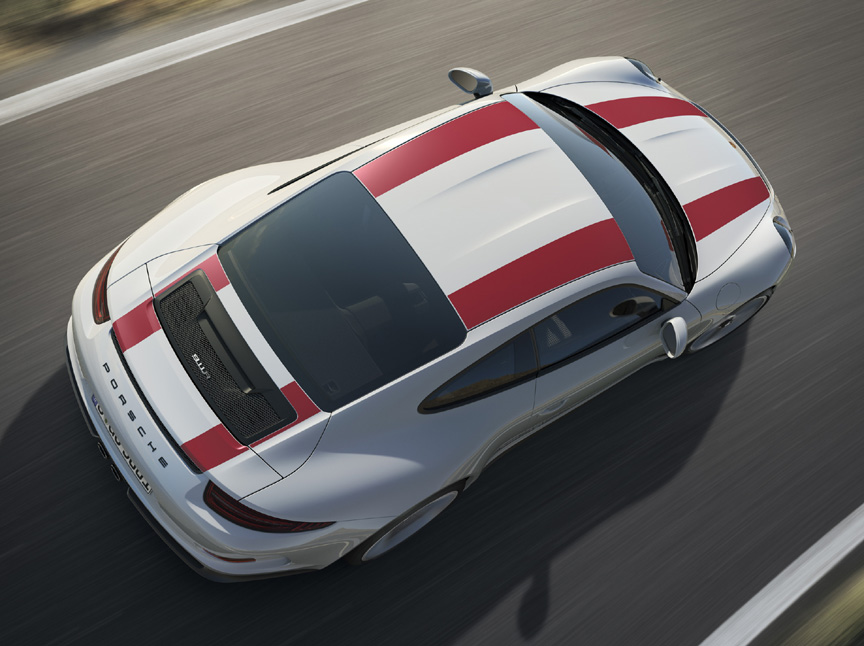
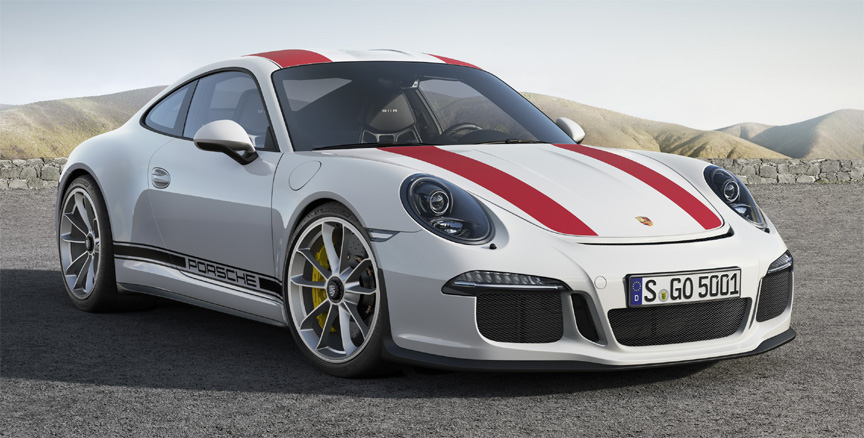
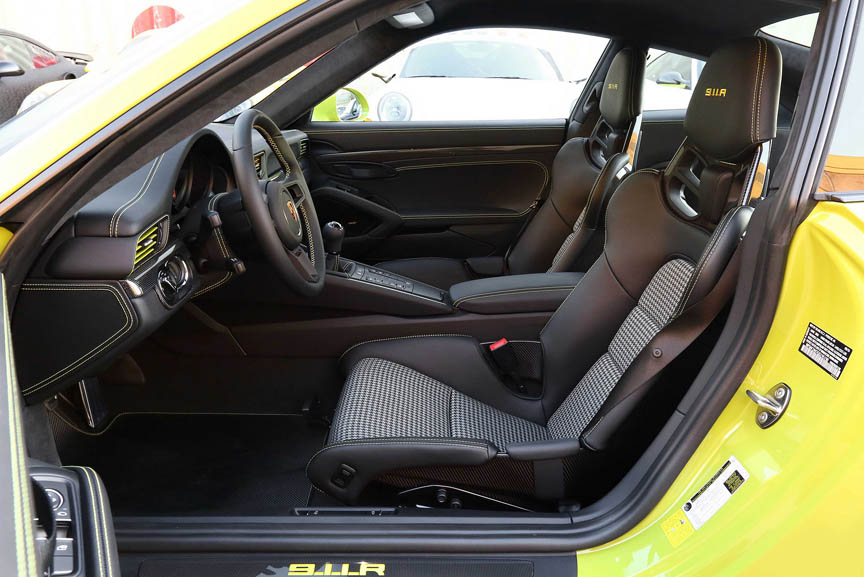
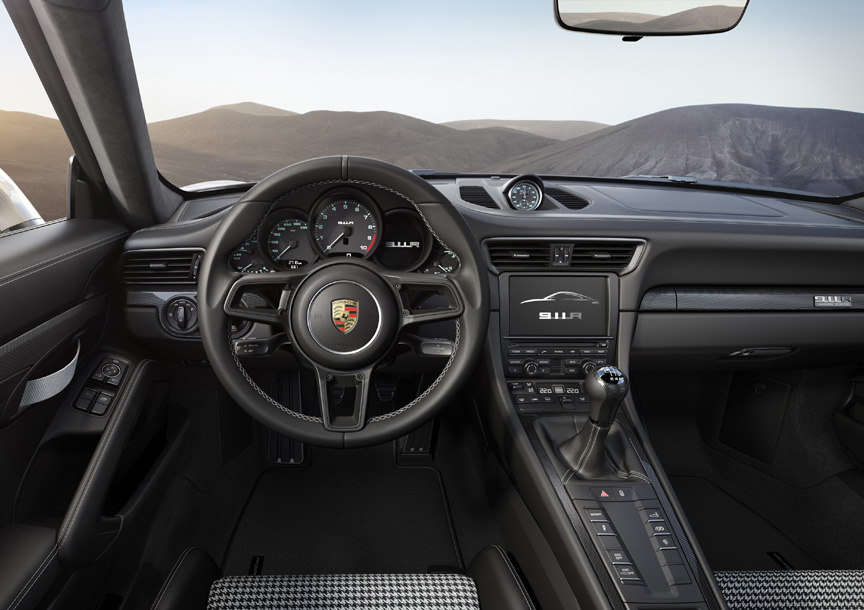
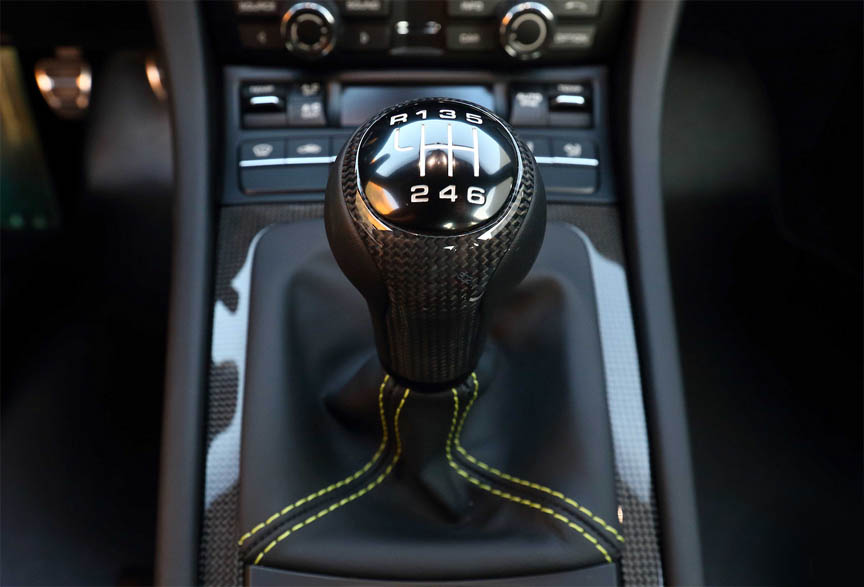
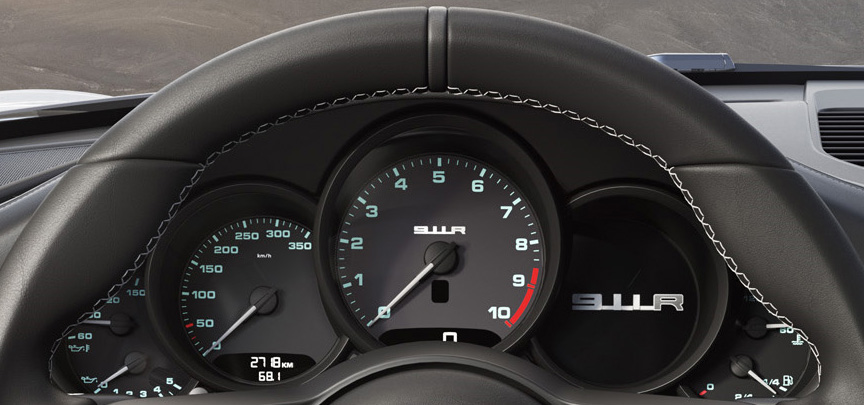
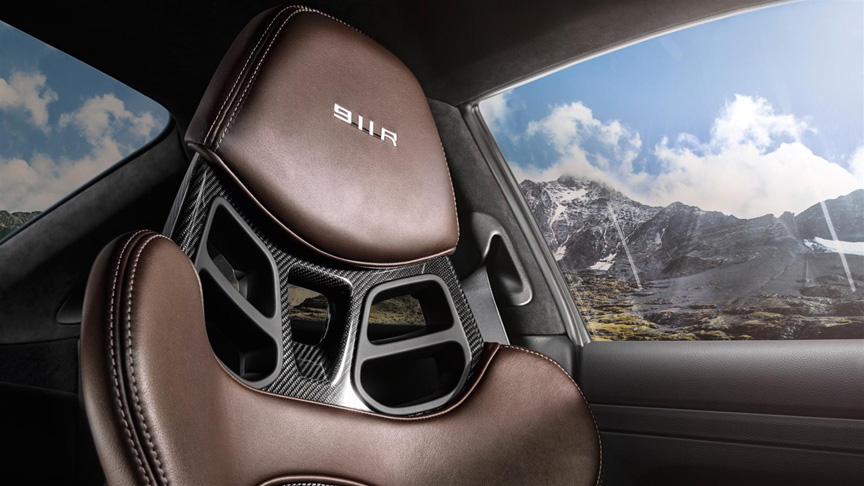
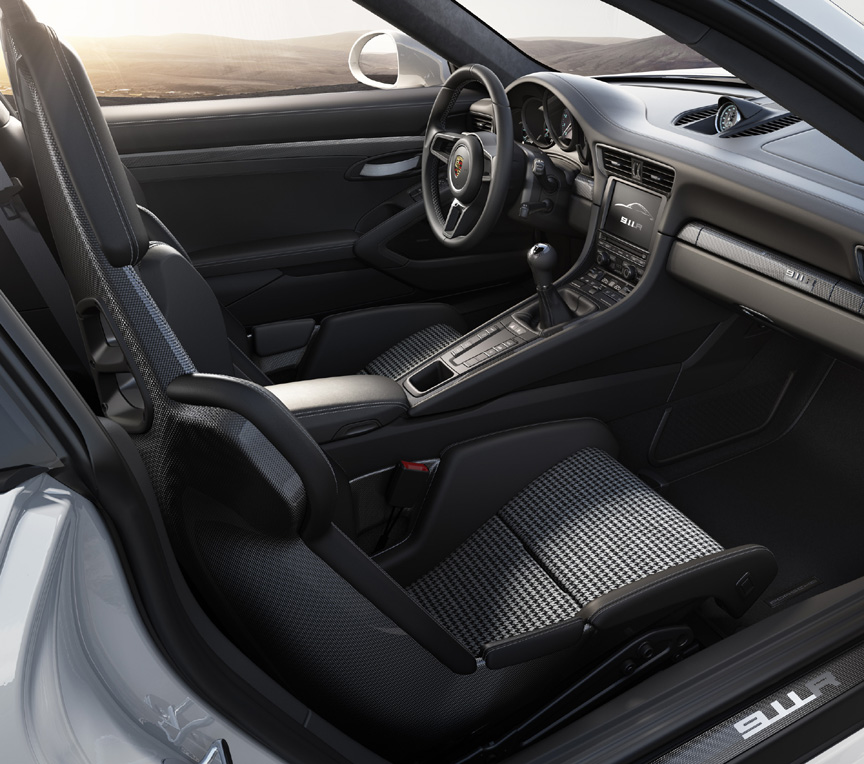
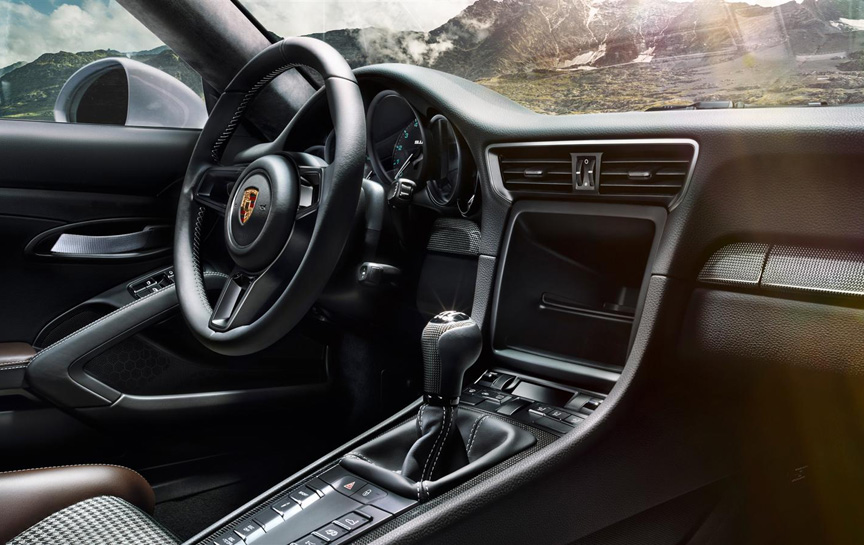
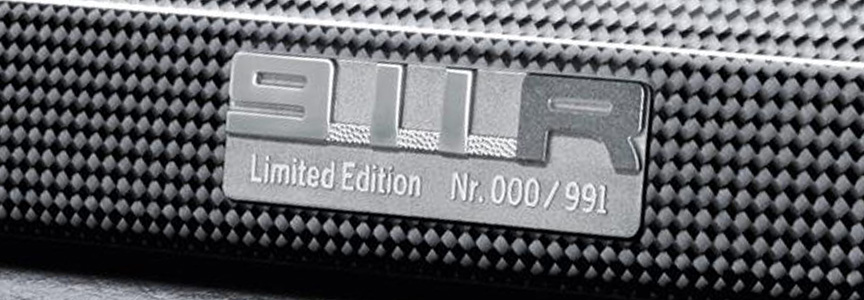
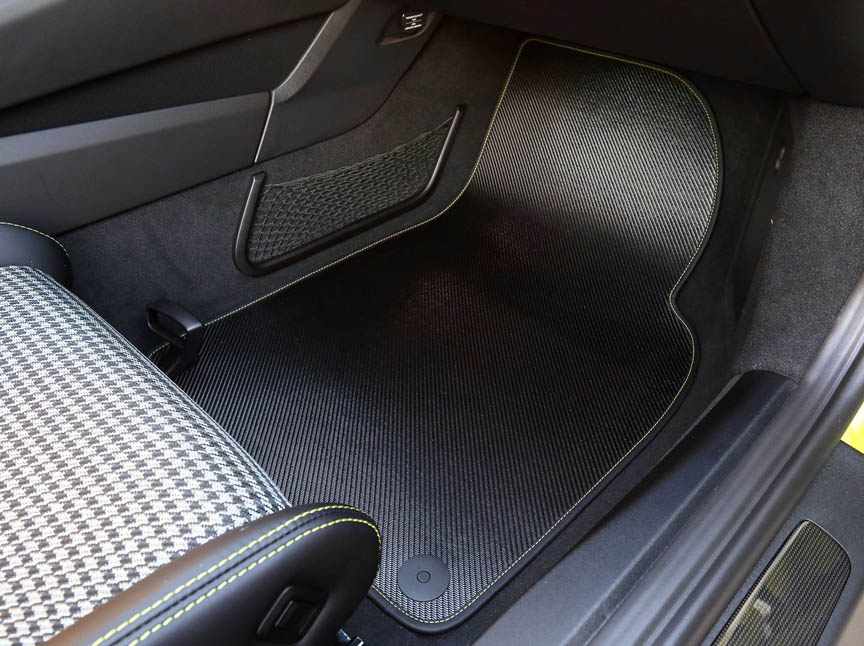
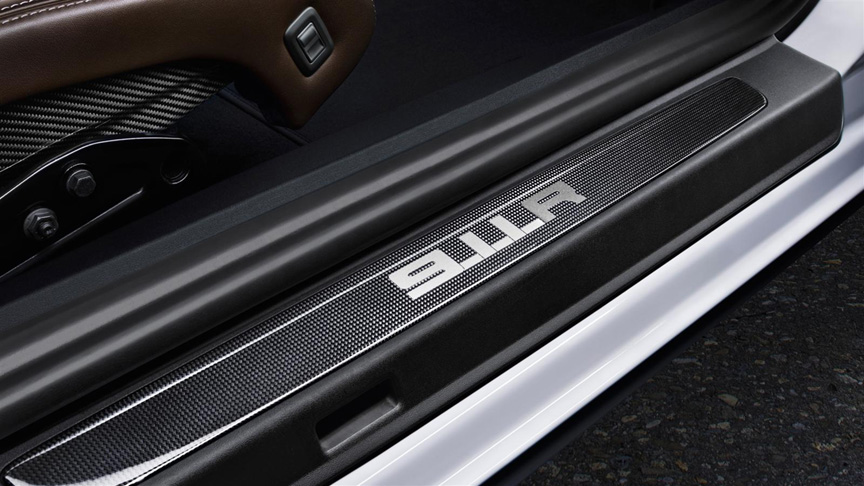
Pictures
The Reviews
Press Release
Low volume special series with powerful naturally aspirated engine and manual transmission
Unveiled today at the 2016 Geneva International Motor Show, the new Porsche 911 R is a pure-bred sports car built to conform to a time-honoured formula; a powerful 500 hp (368 kW) four-litre naturally-aspirated flat-six engine driving the rear wheels, a six-speed manual transmission, and a lightweight body. It is also limited to just 991 examples worldwide.
These characteristics place the 911 R firmly in the tradition of its historic namesake: a road-homologated racing car from 1967. Produced as part of a limited production series, the original 911 R was campaigned in iconic road races of the period, such as the Tour de France and Targa Florio, and also in world record runs.
Like its legendary predecessor, the new 911 R offers an unfiltered driving experience, delivered via systematic lightweight construction and a devotion to maximum performance: this special model has an overall weight of 1,370 kilograms and is thus the lightest version of the 911. With a high-revving six-cylinder naturally aspirated engine and manual sports transmission, Porsche is once again underlining its commitment to especially emotional high-performance sports cars. Developed in the Motorsport workshop, the 911 R extends the spectrum of high-performance naturally-aspirated engines alongside the motor sport-inspired, track-bred models 911 GT3 and 911 GT3 RS.
In the rear of the 911 R lies the charismatic flat-six ‘boxer’ engine with a displacement of four-litres, familiar from the 911 GT3 RS. The race-bred engine delivers 500 hp at 8,250 rpm and generates 460 Nm at 6,250 rpm.
From a standing start, 0-60 mph is possible in 3.7 seconds. In keeping with the pure character of the 911 R, it is available exclusively with a six-speed manual sports transmission. The short gearshift travel emphasises the interactive driving experience. The forward thrust of the 911 R continues to a potential top speed of 201 mph (323 km/h), and Combined NEDC fuel consumption is 21.2 mpg (13.3 l/100 km).
A thoroughbred driving machine: technology from the race track
The 911 R could almost have been made for twisting roads. Fitted as standard with specially-tuned rear-axle steering, direct turn-in and precise handling is guaranteed while maintaining high stability. In addition, the mechanical rear limited slip differential ensures maximum traction.
Ensuring the greatest possible deceleration are Porsche Ceramic Composite Brakes (PCCB), also fitted as standard. The discs measure a generous 410 mm diameter on the front axle and 390 mm on the rear. Ultra High Performance Tyres of 245 mm width at the front and 305 mm width at the rear provide assured contact to the road. These are mounted on lightweight, forged aluminium wheels with centre-locking and matt-finish.
Motorsport development has adapted the control systems of the Porsche Stability Management (PSM) for the 911 R, tailoring the car for a focused and authentic driving experience. An optional single-mass flywheel for the engine is one example of this, resulting in a significant improvement in spontaneity and high-rev responsiveness of the engine. A double-declutch function – activated by pressing a button – for perfect gearshifts when changing down is also part of the repertoire of the 911 R.
For broad everyday versatility, a lift system can also be ordered: it raises ground clearance of the front axle by approximately 30 mm at the touch of a button.
With an overall weight of 1,370 kg, the 911 R undercuts the 911 GT3 RS by 50 kg. The bonnet and front wheel-arches are made of carbonfibre and the roof is magnesium, which reduces the centre of gravity. Rear windscreen and rear side windows are lightweight plastic. Additional weight-saving factors are the reduced sound insulation in the interior and the omission of a rear bench seat.
The optional air conditioning system and the audio system also hint at the intense slimming regime.
Wolf in sheep’s clothing: classic 911 look with GT motor racing technology
From the exterior, the 911 R gives a reserved impression. At first sight, the body resembles that of the Carrera. The nose and rear body will be familiar from the 911 GT3, and hint at the birthplace of the 911 R: namely the motorsport department in Flacht. In technical terms therefore, the 911 R has a lot to show under the skin: namely the drive technology from the 911 GT3 RS.
All the lightweight components of the body and the complete chassis originate from the 911 GT3. However, with a view to road use, the body does not have the fixed rear wing familiar with that model. Instead, a retractable rear spoiler shared with the Carrera models and a bespoke aerodynamic diffuser beneath the rear underbody provides the necessary downforce.
The front and rear apron come from the 911 GT3, with a re-designed spoiler lip installed on the front. The sports exhaust system consists of the lightweight construction material titanium.
Continuous coloured stripes in red or green over the entire mid-section of the vehicle provide a visual cue to the legendary predecessor. A further leitmotif is provided by the ‘Porsche’ script along each side of the vehicle.
The driver and front passenger sit in a carbon-fibre bucket seat, trimmed with bespoke fabric centre panels in Pepita tartan design, a nod to the first 911 in the 1960s. Fabric pull straps on each door are a familiar hint to the focused intent of all 911 models from the GT department.
Ahead of the driver sits an R-specific 360 mm diameter GT sport steering wheel, and a short shift gearlever – not to mention the obvious clutch pedal in the footwell – contribute to the specific interior ambience. And underlining the special nature of this limited production model, carbon trim strips in the interior with an embedded aluminum badge on the passenger’s side indicate the limited number of each 911 R.
Launch and prices
The new Porsche 911 R is available to order from today in Porsche Centres in the UK and Ireland, priced from £136,901. Limited to 991 units worldwide, first UK deliveries are scheduled for June.
The 911 R is arguably the ultimate road-focused 911 in the 53 year history of the model. It is certain to be appreciated by long-standing fans of the 911, and in particular those customers that have consistently owned, lived with and driven successive generations of this iconic sports car.


